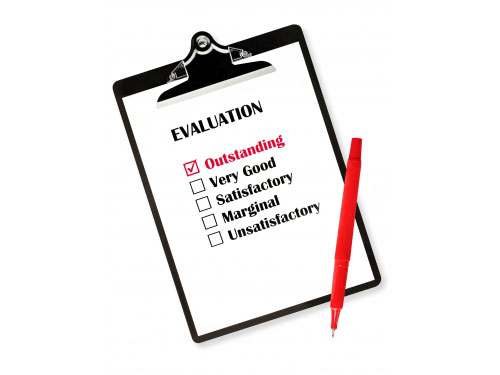Laura Overton of Towards Maturity expands on her charity’s recent benchmark survey and what it means for many businesses’ productivity in the coming year. How can we do things differently?
We enter 2012 with great hopes of using learning technologies more effectively to contribute to business success, but will we achieve our aspirations based on current form?
Three out of five of TrainingZone’s members are looking for more information around learning technologies and our own 2011-12 Benchmark Study sheds light on why – and it is not just about cost cutting. Four out of five are looking to improve access to learning, to improve quality of learning whilst increasing efficiency. There is a growing hunger to start to harness technology more effectively to help us help businesses respond rapidly to constantly changing conditions, with 77% of 600 benchmark participants looking for new ways to boost business agility [1].
Yet, the majority of organisations are only at the tip of the iceberg when it comes to realising the true potential that technology can offer to learning – focussing on self-paced courses and basic learning management systems to help tick the box of increasing regulatory requirements. I am not knocking the importance of online compliance training – it has been the starting point for many successful organisations – but staying at this level, we are hardly going to improve quality or increase business agility.
 "Given the high expectations of what we want to achieve in learning with technology, now is the time to consider a few New Year’s resolutions that will make a real difference."
"Given the high expectations of what we want to achieve in learning with technology, now is the time to consider a few New Year’s resolutions that will make a real difference."Given the high expectations of what we want to achieve in learning with technology, now is the time to consider a few New Year’s resolutions that will make a real difference. The tried and tested approach to technology and learning might have been helpful to get started but could be preventing us from achieving our potential this year. From our research, we know that the top performers are really starting to break away from traditional approaches and deliver significantly better results back to the business; their activity provides us with five areas were we should resolve to think again for 2012:
Think differently about the opportunity
Changing business conditions are providing more opportunity for learning technology adoption than ever before. But we need to think about that opportunity from the business perspective, and not from a technology perspective. We know from studies with the Institute of Directors and the CBI that business leaders still consider skills, particularly skills relating to leadership and team working as a critical component for recovery with staff performance, also high on the agenda. Managers are also looking for innovative ways of addressing those skills and performance issues appropriately. Regrettably several recent research studies with management shows there is little confidence in L&D as a partner to support recovery – despite our protestations.
Our business cases based on course provision and the cost cutting benefits of technology may have done little to raise the profile of L&D as a proactive partner to business. Just over half of L&D even analyse the business problem before designing a learning solution and in 2012, this needs to change. We should review the opportunity for learning innovation through the lens of the business managers we are seeking to support, not through the eyes of the latest technology trends (however exciting the opportunities for mobile or social technologies may be).
Think differently about content
Although traditional self-paced courses remain at the top of the list for the most frequently reported instance of technology in learning, it is clear that one size definitely does not fit all. Top performers are nearly twice as likely to use a mix of methods in their content design combining video, audio, images and text (yes, there are still some organisations out there that only use text in developing their online content). They are also more likely to be using off the shelf programmes, free open educational resources, user generated content (blogs, videos and podcasts) in order to help them react and adapt quickly to new business requirements. They exhibit an increased confidence in using materials not entirely within their control and are able to decide when to go for a quick solution and when to invest in a long-lasting quality product. They trust other providers, and they trust their staff – and it is paying off.
Think differently about skills
It is time to put aside the argument that often drives technology-enabled learning – that it is really only useful for compliance training or knowledge sharing. Experience of the top performers shows that it just simply isn’t true. Top performers are using a blend of delivery media and methods to develop a much wider range of skills, including business-critical skills such as leadership and customer service defined above. When it comes to designing innovative skills programmes, top performers are also more likely to integrate their e-enabled learning with face to face initiatives and what’s more build on the knowledge gained via elearning in the classroom. 70%+ of top performers do this compared with 25% on average – despite what we all say about the importance of blended learning. We need to be putting aside ideas about what will work and what won’t based on our experiences of the past and consider new approaches more relevant to business needs in 2012.
Think differently about performance
85% of top performers agree strongly that the course is only one of many options for building skills and performance (compared with 55% on average) and as a result are looking for ways to encourage learning away from the course and into the workplace.
75% of top performers encourage learners to pass on their knowledge to others (compared with 34% on average). They are more likely to be using video to share internal best practices, communities of practice, social networking sites (both internal and external), podcasting and wikis and blogs to encourage collaboration and reflection between peers. This focus on supporting performance was identified last year and this year the top performers have all increased their activity in this area. However on average they have decreased overall. This surely is an area where we have stop talking and resolve to act – those that are embracing performance support are already making progress and reaping the benefits.
"We need to be putting aside ideas about what will work and what won’t based on our experiences of the past and consider new approaches more relevant to business needs in 2012."
Think differently about you
Typically New Year’s resolutions are about self-improvement and this is just as applicable here. Top performers are proactively investing in the skills of their L&D teams with 80% training their trainers to blend learning. L&D’s reluctance remains the top barrier to successful implementation for the second year running – it is time to raise our confidence, our skills and our game.
New technologies such as mobile and social create new opportunities but real change will not be driven by them. Real change is driven by resolve – we are unlikely to see significant improvements when we constantly repeat cycles of familiar activity or leave change to chance. The first step involves resolving to think differently about the way that we respond to circumstances- step two is resolving to act using the best tools and approaches available.
Why not take a leaf out of the top performer’s book and approach this year with fresh thinking and fresh resolve?
[1] Statistics quoted in this article are from the 2011-12 Towards Maturity Benchmark which can be downloaded for free here
Laura Overton of Towards Maturity expands on her charity's recent benchmark survey and what it means for many businesses' productivity in the coming year. How can we do things differently?
We enter 2012 with great hopes of using learning technologies more effectively to contribute to business success, but will we achieve our aspirations based on current form?
Three out of five of TrainingZone's members are looking for more information around learning technologies and our own 2011-12 Benchmark Study sheds light on why – and it is not just about cost cutting. Four out of five are looking to improve access to learning, to improve quality of learning whilst increasing efficiency. There is a growing hunger to start to harness technology more effectively to help us help businesses respond rapidly to constantly changing conditions, with 77% of 600 benchmark participants looking for new ways to boost business agility [1].
Yet, the majority of organisations are only at the tip of the iceberg when it comes to realising the true potential that technology can offer to learning - focussing on self-paced courses and basic learning management systems to help tick the box of increasing regulatory requirements. I am not knocking the importance of online compliance training - it has been the starting point for many successful organisations - but staying at this level, we are hardly going to improve quality or increase business agility.
 "Given the high expectations of what we want to achieve in learning with technology, now is the time to consider a few New Year's resolutions that will make a real difference."
"Given the high expectations of what we want to achieve in learning with technology, now is the time to consider a few New Year's resolutions that will make a real difference."Given the high expectations of what we want to achieve in learning with technology, now is the time to consider a few New Year's resolutions that will make a real difference. The tried and tested approach to technology and learning might have been helpful to get started but could be preventing us from achieving our potential this year. From our research, we know that the top performers are really starting to break away from traditional approaches and deliver significantly better results back to the business; their activity provides us with five areas were we should resolve to think again for 2012:
Think differently about the opportunity
Changing business conditions are providing more opportunity for learning technology adoption than ever before. But we need to think about that opportunity from the business perspective, and not from a technology perspective. We know from studies with the Institute of Directors and the CBI that business leaders still consider skills, particularly skills relating to leadership and team working as a critical component for recovery with staff performance, also high on the agenda. Managers are also looking for innovative ways of addressing those skills and performance issues appropriately. Regrettably several recent research studies with management shows there is little confidence in L&D as a partner to support recovery - despite our protestations.
Our business cases based on course provision and the cost cutting benefits of technology may have done little to raise the profile of L&D as a proactive partner to business. Just over half of L&D even analyse the business problem before designing a learning solution and in 2012, this needs to change. We should review the opportunity for learning innovation through the lens of the business managers we are seeking to support, not through the eyes of the latest technology trends (however exciting the opportunities for mobile or social technologies may be).
Think differently about content
Although traditional self-paced courses remain at the top of the list for the most frequently reported instance of technology in learning, it is clear that one size definitely does not fit all. Top performers are nearly twice as likely to use a mix of methods in their content design combining video, audio, images and text (yes, there are still some organisations out there that only use text in developing their online content). They are also more likely to be using off the shelf programmes, free open educational resources, user generated content (blogs, videos and podcasts) in order to help them react and adapt quickly to new business requirements. They exhibit an increased confidence in using materials not entirely within their control and are able to decide when to go for a quick solution and when to invest in a long-lasting quality product. They trust other providers, and they trust their staff – and it is paying off.
Think differently about skills
It is time to put aside the argument that often drives technology-enabled learning – that it is really only useful for compliance training or knowledge sharing. Experience of the top performers shows that it just simply isn't true. Top performers are using a blend of delivery media and methods to develop a much wider range of skills, including business-critical skills such as leadership and customer service defined above. When it comes to designing innovative skills programmes, top performers are also more likely to integrate their e-enabled learning with face to face initiatives and what's more build on the knowledge gained via elearning in the classroom. 70%+ of top performers do this compared with 25% on average – despite what we all say about the importance of blended learning. We need to be putting aside ideas about what will work and what won't based on our experiences of the past and consider new approaches more relevant to business needs in 2012.
Think differently about performance
85% of top performers agree strongly that the course is only one of many options for building skills and performance (compared with 55% on average) and as a result are looking for ways to encourage learning away from the course and into the workplace.
75% of top performers encourage learners to pass on their knowledge to others (compared with 34% on average). They are more likely to be using video to share internal best practices, communities of practice, social networking sites (both internal and external), podcasting and wikis and blogs to encourage collaboration and reflection between peers. This focus on supporting performance was identified last year and this year the top performers have all increased their activity in this area. However on average they have decreased overall. This surely is an area where we have stop talking and resolve to act – those that are embracing performance support are already making progress and reaping the benefits.
"We need to be putting aside ideas about what will work and what won't based on our experiences of the past and consider new approaches more relevant to business needs in 2012."
Think differently about you
Typically New Year's resolutions are about self-improvement and this is just as applicable here. Top performers are proactively investing in the skills of their L&D teams with 80% training their trainers to blend learning. L&D's reluctance remains the top barrier to successful implementation for the second year running – it is time to raise our confidence, our skills and our game.
New technologies such as mobile and social create new opportunities but real change will not be driven by them. Real change is driven by resolve – we are unlikely to see significant improvements when we constantly repeat cycles of familiar activity or leave change to chance. The first step involves resolving to think differently about the way that we respond to circumstances- step two is resolving to act using the best tools and approaches available.
Why not take a leaf out of the top performer's book and approach this year with fresh thinking and fresh resolve?
[1] Statistics quoted in this article are from the 2011-12 Towards Maturity Benchmark which can be downloaded for free here





